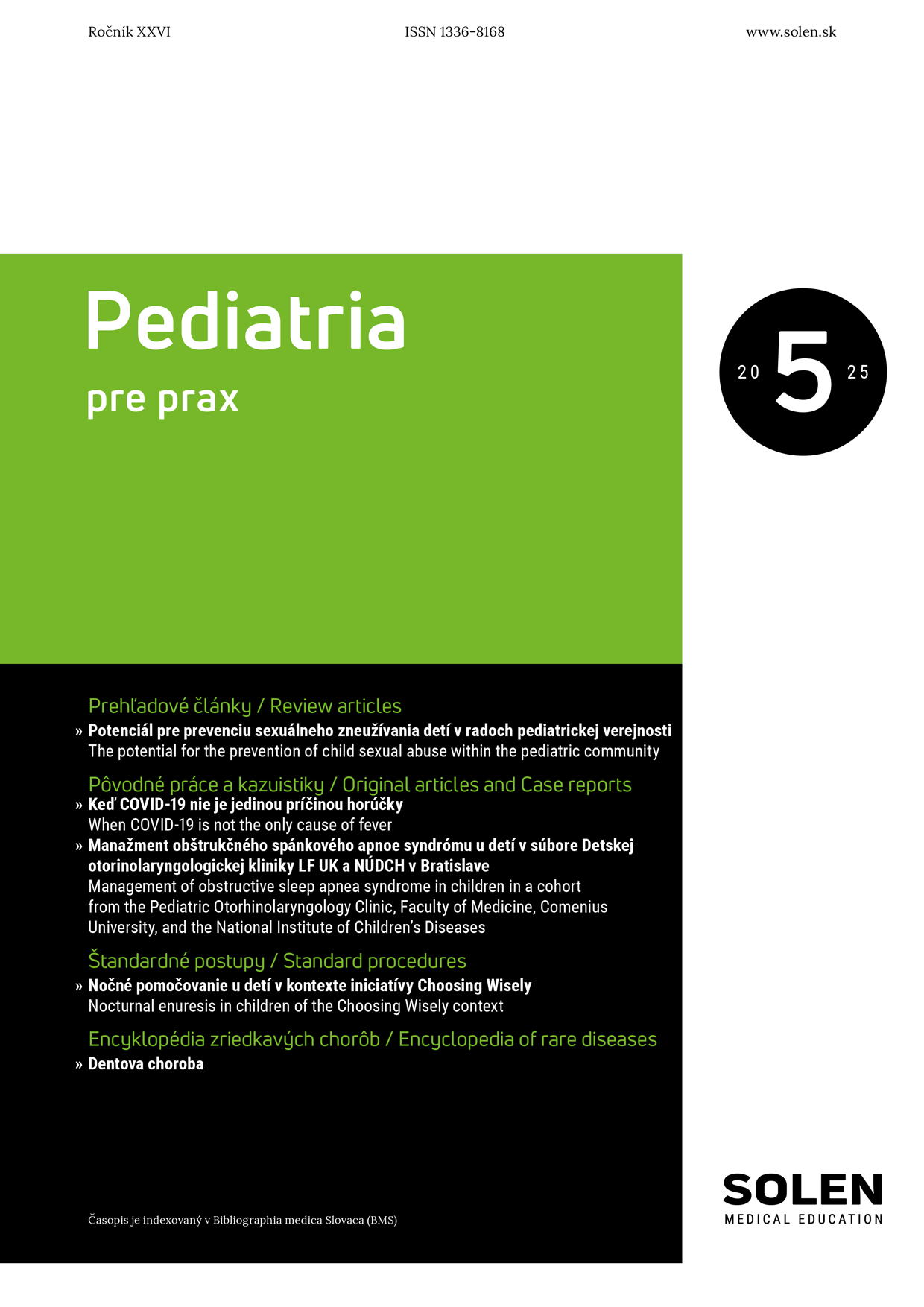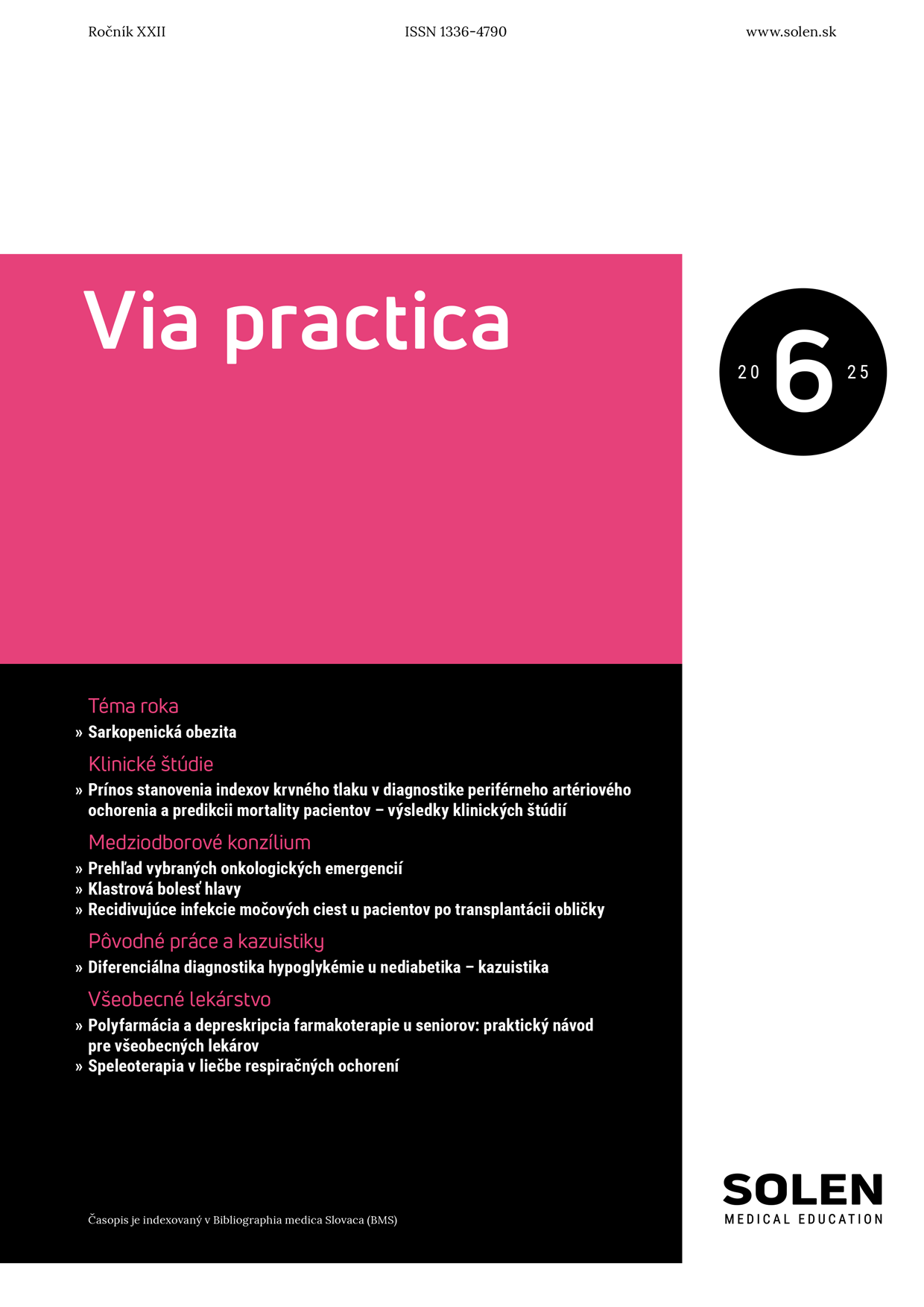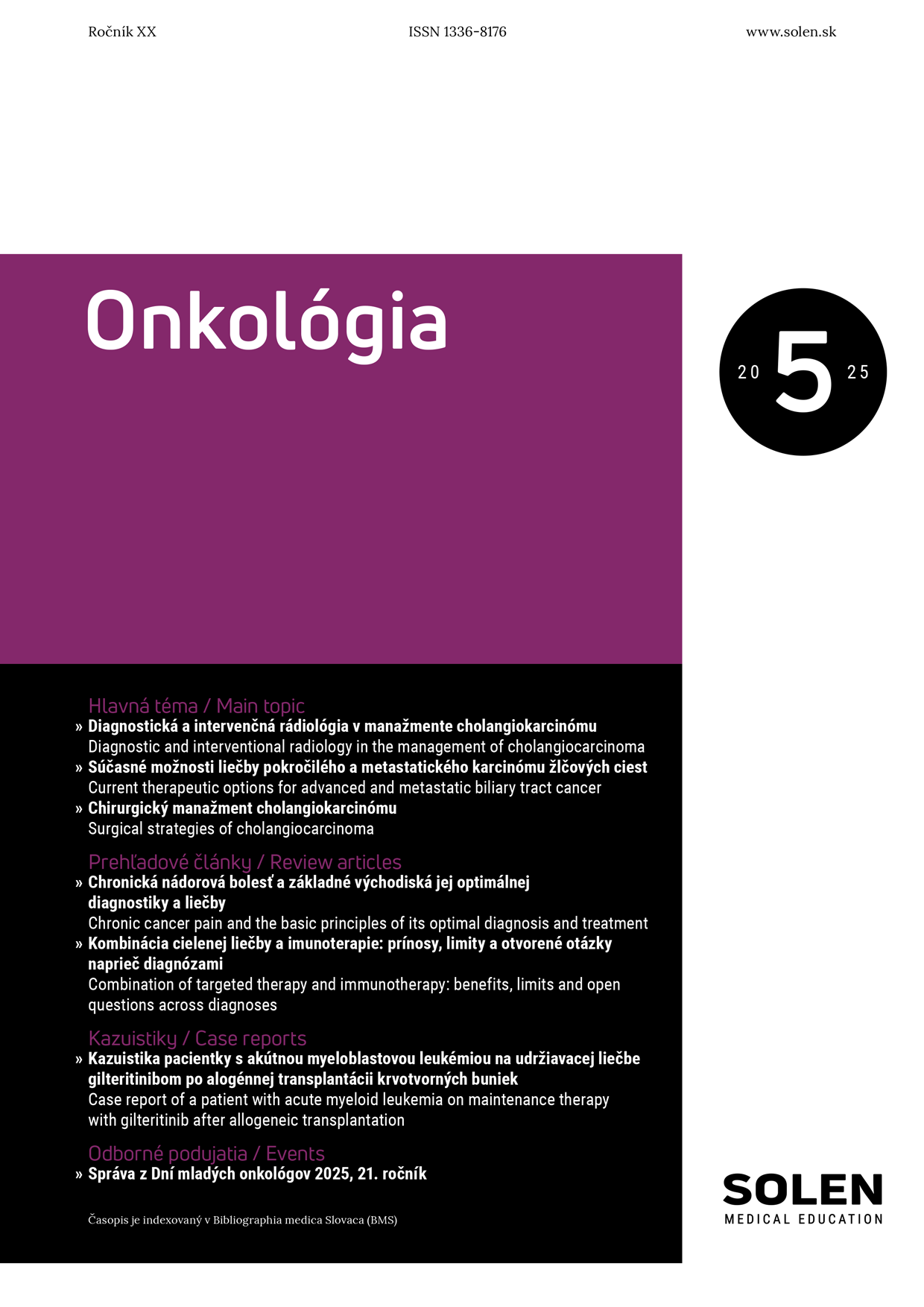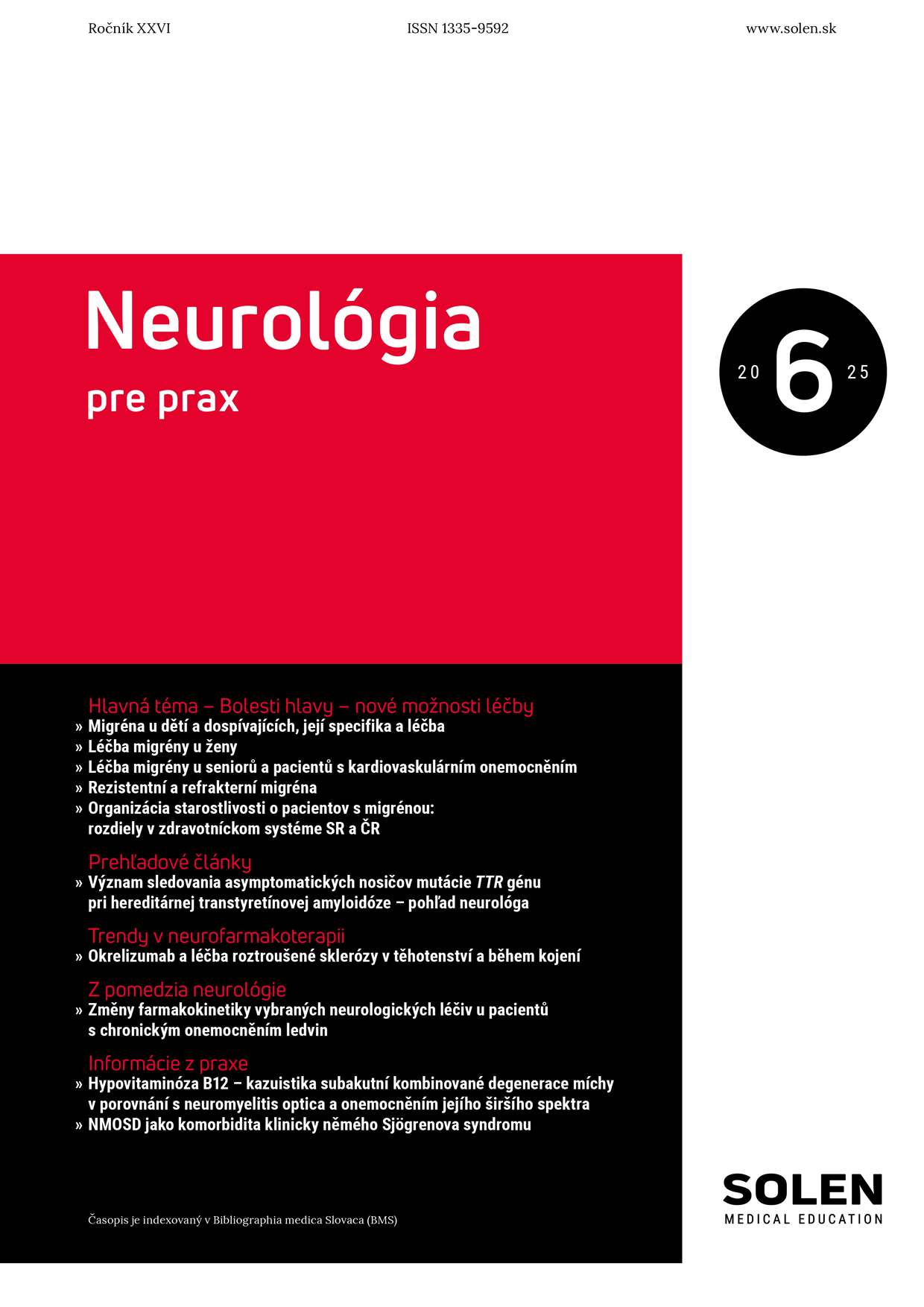Vaskulárna medicína 2/2022
The factors associated with persistent type II endoleak after endovascular abdominal aortic aneurysm repair
Backround: Type II endoleaks are the most common complication occuring after endovascular abdominal aortic aneurysm repair (EVAR). The aim of our study was to evaluate the association between non-anatomical factors including polymorphisms associated with abdominal aortic aneurysm (AAA) and persistent type II endoleak. Patients and methods: The cohort comprises of 210 patients undergoing EVAR between January, 2010 and December, 2018. A persistent type II endoleak was defined as any type II endoleak lasting longer than six months and included also a type II endoleak diagnosed after six months or more post-EVAR confirmed with CT-angiography. The adjustments included age, hypertension, diabetes mellitus, dyslipidaemia, sex, smoking in multivariate analysis. Results: After exclusion, 178 pacients with mean age 72.4±7.60 years remained for analysis. Treatment with calcium channel blockers increased risk of persistent type II endoleak 2.11-times in multivariate analysis (OR 2.11; 95% CI 1.05–4.25; p=0.037). There was a trend observed between anticoagulation treatment and persistent type II endoleak. No association between persistent type II endoleak and selected polymorphisms associated with AAA or other observed factors was found. Conclusion: Risk of persistent type II endoleak was more than doubled in patients taking calcium channel blockers compared to patients without calcium channel blocker treatment.
Keywords: type II endoleak, calcium channel blockers, abdominal aortic aneurysm, endovascular treatment

















